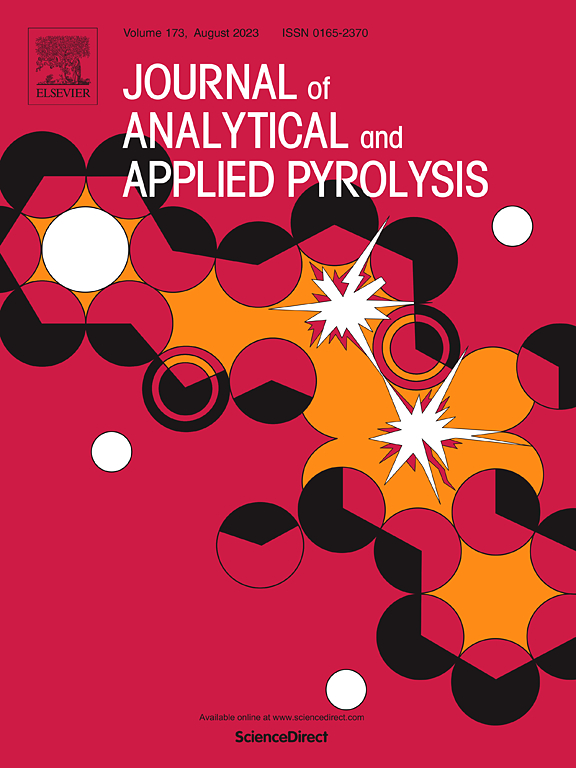Unlocking biofuel potential: Synergistic production of biofuel precursors from acid-loaded corncobs via staged pyrolysis
IF 5.8
2区 化学
Q1 CHEMISTRY, ANALYTICAL
引用次数: 0
Abstract
Biomass, a renewable resource, presents inherent challenges for selective conversion into high-value chemicals based on the compositional structure of biomass via conventional pyrolysis. This study introduced an innovative two-stage pyrolysis, combining acid-catalyzed low-temperature pyrolysis with catalytic upgrading over ZSM-5, for the targeted valorization of H3PO4-loaded corncobs. This approach notably outperformed conventional non-catalytic/catalytic and two-stage non-catalytic pyrolysis, achieving higher yields of levoglucosenone, furfural, and cumulative target products. Mechanistic analyses revealed that H3PO4 loading enhanced selective conversion of cellulose and hemicellulose to levoglucosenone and furfural at reduced temperatures by passivating metals and enhancing dehydration reactions. Notably, the maximum furfural yield remained stable across a broad range of acid loadings, ensuring that fluctuations in the actual H3PO4 loading did not significantly impact maximum levoglucosenone yield within practical limits. Furthermore, lignin-rich char residue was effectively converted to light aromatics in the catalytic upgrading stage with high selectivity, albeit at a lower overall yield. Optimal conditions were achieved with 5.5 wt% H3PO4 at 325 °C for the first stage, followed by catalytic upgrading at 550 °C, producing a maximum total yield of 62.6 mg/g of target products. Peak yields of levoglucosenone and furfural reached 23.5 and 34.5 mg/g, respectively, while light aromatics reached 4.6 mg/g with over 98 % selectivity. This study underscores the potential of coupling acid-catalyzed pyrolysis with catalytic upgrading to achieve targeted co-production of valuable chemicals, providing new insights into biomass valorization.
求助全文
约1分钟内获得全文
求助全文
来源期刊
CiteScore
9.10
自引率
11.70%
发文量
340
审稿时长
44 days
期刊介绍:
The Journal of Analytical and Applied Pyrolysis (JAAP) is devoted to the publication of papers dealing with innovative applications of pyrolysis processes, the characterization of products related to pyrolysis reactions, and investigations of reaction mechanism. To be considered by JAAP, a manuscript should present significant progress in these topics. The novelty must be satisfactorily argued in the cover letter. A manuscript with a cover letter to the editor not addressing the novelty is likely to be rejected without review.

 求助内容:
求助内容: 应助结果提醒方式:
应助结果提醒方式:


